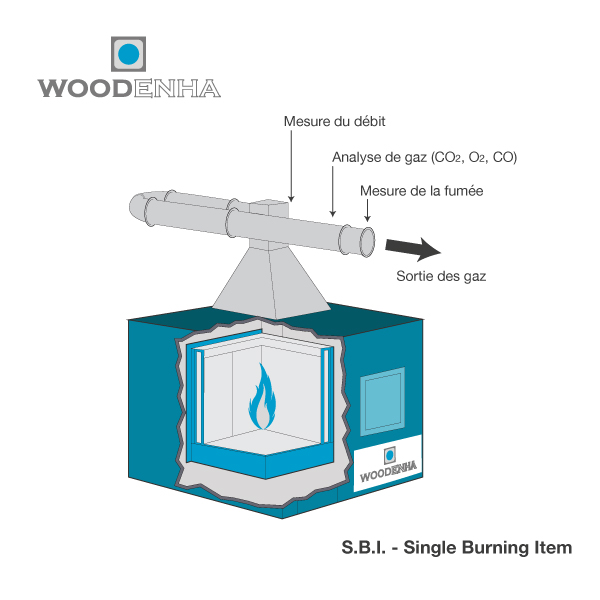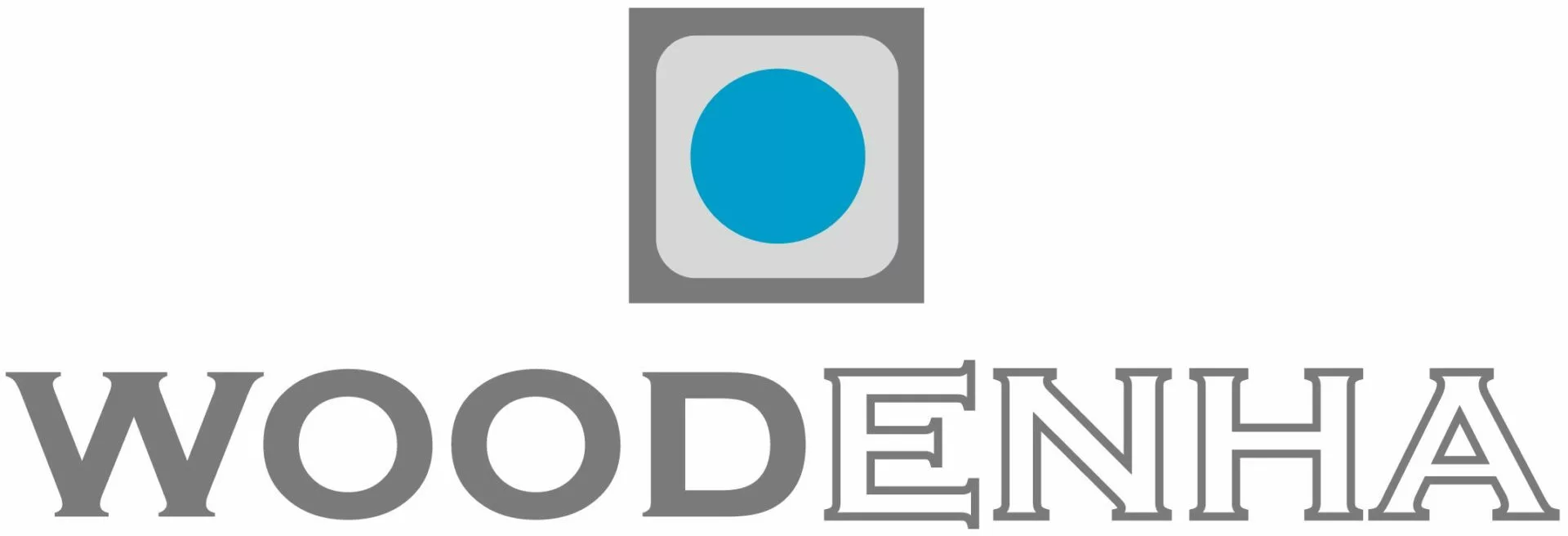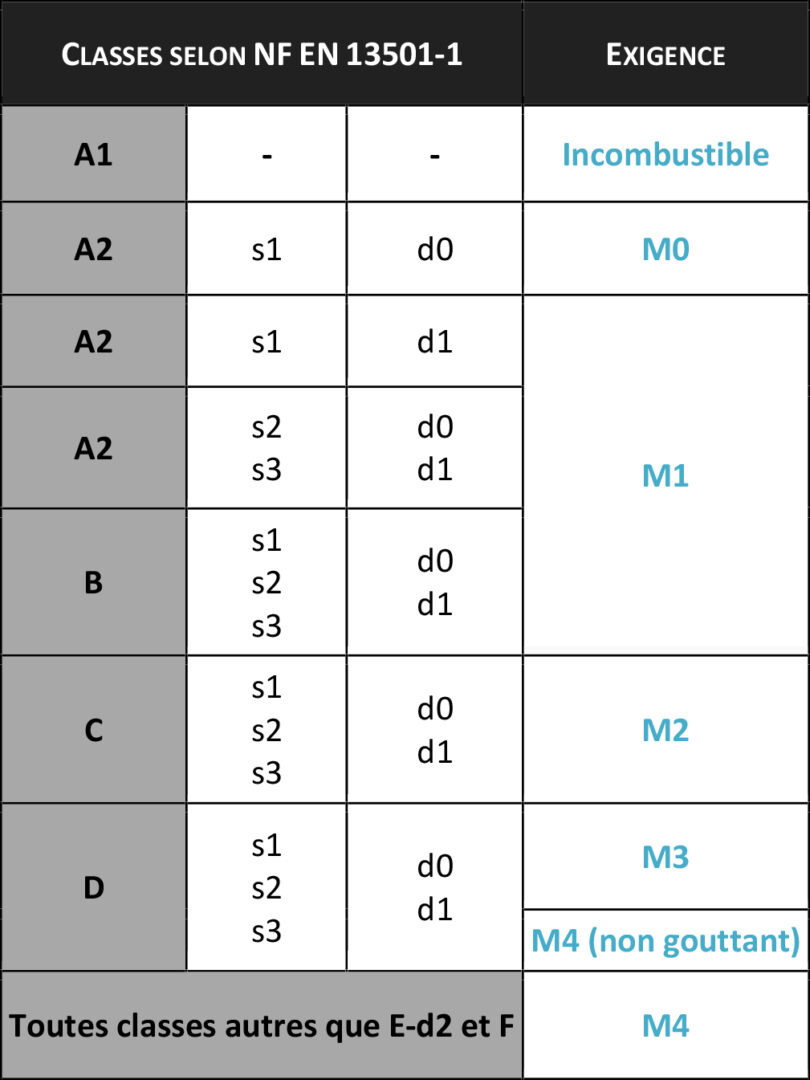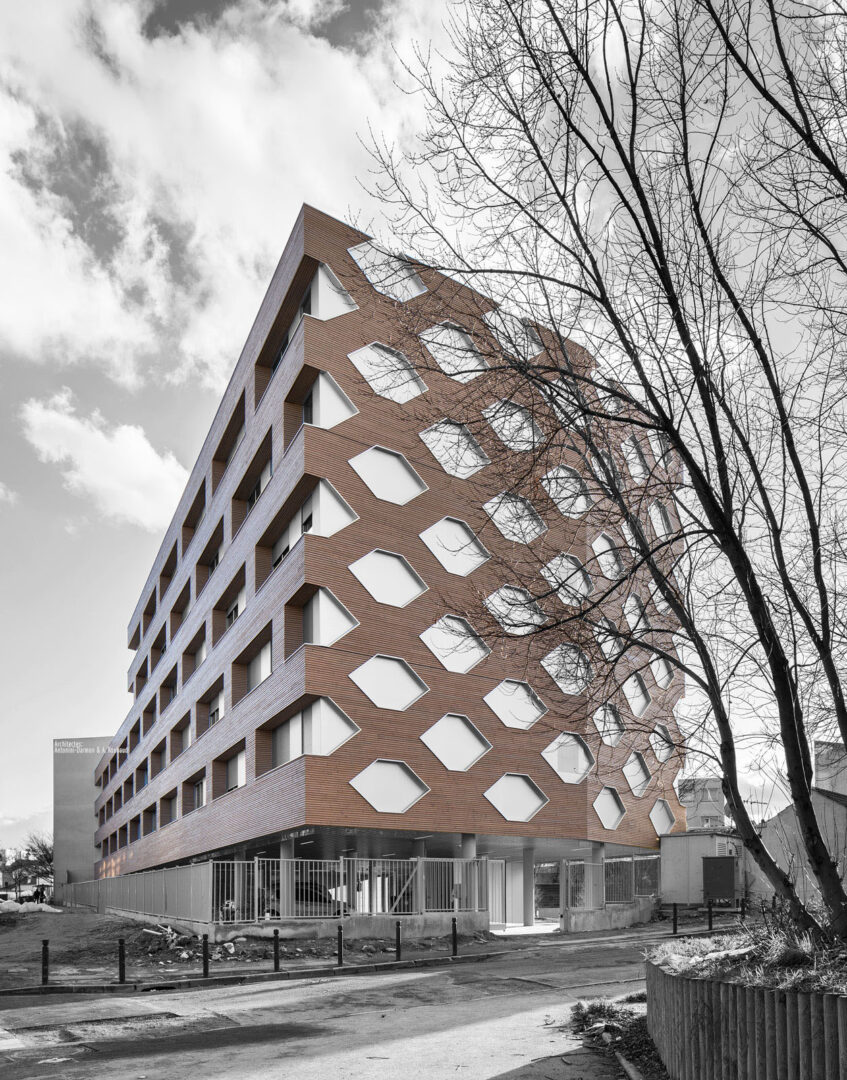Fire grades
Passive fire protection, of which fireproofing is a part, is a tool for conquering the wood products market in the construction of ERP (Establishment Receiving the Public) and interior or exterior fittings. Woodenha has more than 10 years of experience in the fireproofing of solid wood and materials based on natural fibers: many buildings have been built using Woodenha services.
The french former M grade
The M classifications make it possible to quantify the capacity of a material to fuel a fire. This classification is established following a standardized test during which the material is exposed to a heat source, using a device called an epiradiator. During this test, the flammability of the material, the height of the flames and the duration of ignition are measured. An M0 material is said to be non-combustible. Wood in its natural state is by default and by decree classified M3, moderately flammable or M4, highly flammable, depending on the thickness of the material considered and the species of wood. Theoretically M3 are hardwoods over 14 mm thick and softwoods over 18 mm thick (see modified 1983 decree & DTU Bois Feu 88, replaced by updated versions like Eurocode 5) .
The fireproofing processes used by Woodenha Industries make it possible to obtain with most woods an M1 classification, very hardly flammable, or else M2, hardly flammable.
Warning! Since some 2002, the M classification has been replaced by a European classification which not only measures flammability but also the generation of heat, the opacity of the fumes and the propensity of a material to produce incandescent droplets: the Euroclass. The regulation of construction products (RPC) requires to present a Euroclass performance for products attached to a harmonized European standard. This is the case of wooden panels, paneling, siding, etc.
Although the actual correspondence between the two classifications is not possible, the new wood fire classification Euroclass D will be associated with classification M3, Euroclass C with classification M2 and Euroclass B with classification M1. On the other hand, for materials, furniture and furnishings, the M classification remains in force (as for fabrics also).
Looking for fire expertise ?
Consult us for the opinion of a Woodenha expert
European Euroclass grades
The Euroclass classification is the new method of classifying the reaction to fire of construction materials and products. It is in force in all countries of the European Union. This classification is established thanks to a battery of tests, the main one of which is called SBI (Single Burning Item) defined by standard EN 13823. This test makes it possible to measure the consequences of an accidental fire – trash fire type – in an angle of building. For this, the wall is reconstructed as it will actually be used in construction and it is exposed directly to the flames of a gas burner in a closed enclosure which allows measurements. Three factors define the Euroclass classification: instantaneous energy released throughout combustion and total energy (FIGRA & THR – letters A, B, C, D or E), smoke opacity (SMOGRA – in the case of wood often s1) and the formation of flaming droplets or debris (in the case of wood-based materials: d0, i.e. no droplets).
Unlike the SBI test, the epiradiator test for classification M is carried out on the material not used, in the form of a standardized test piece. Neither the possible machining of the material, nor the type of assembly is taken into account. The M classification qualifies a material only while the Euroclass classification qualifies a construction system, a material or even a product.

Who sets the rules for fire protection in buildings ?
Several bodies have been involved in developing these rules and are still participating in their updating today. The body that oversees this work is the General Directorate of Civil Security and Crisis Management (D.G.S.C.G.C.), a direct result of the Ministry of the Interior. Several working groups have been created to determine either the materials assessment techniques (CECMI – Study and classification committee for building materials and elements in relation to the fire danger – disappeared in June 2014) or the rules of their use (GTFI). Working groups bring together the ministries concerned, test laboratories, firefighters, control offices and any professional organization concerned with fire protection or construction after agreement with the Ministry of the Interior.
As a fire protection professional, Woodenha Industries has participated as an administrator of the GTFI for several years in the work of these two commissions.
Various official documents govern the rules of fire protection in France, valid in particular for the use of wood in construction.
- Decrees of June 25, 1980 (modified) and of June 22, 1990 (modified): safety regulations against fire risks in public buildings
- Technical instruction n ° 249 (IT249) relating to facades (modified) and with its sector guides
- Decree of January 31, 1986 (modified): fire protection of residential buildings.
The most regulated buildings are Public Reception Establishments (ERP) but certain residential buildings (3rd family B and 4th family) are also subject to significant material constraints linked to fire risk.
However, to date, the fire risk is not a constraint formally prohibiting the use of wood in construction. Existing fireproofing techniques meet the requirements required by law.


